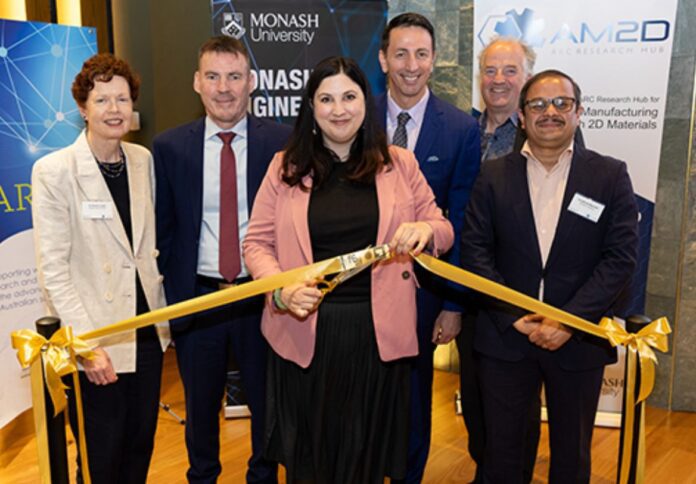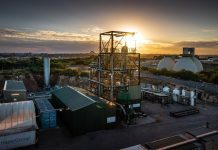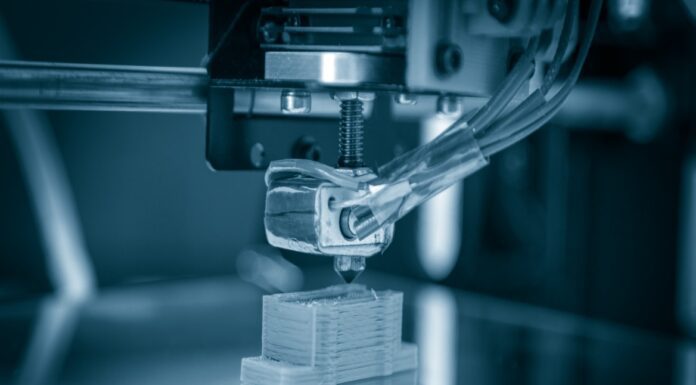
Monash University has officially opened a new research hub that will facilitate research and commercialisation of 2D materials like graphene with a vast range of applications including in water treatment and manufacturing of batteries, coatings, paints, and sensors.
The Australian Research Council (ARC) Research Hub for Advanced Manufacturing of 2D Materials (AM2D) was launched yesterday, 20 November, with the event attended by Member of Parliament Dr Carina Garland, Member for Chisolm, along with researchers and industry.
The new research hub will address the growing demand for 2D materials by enhancing Australia’s graphene and 2D manufacturing capability and supporting the production of high-tech products, including energy storage devices, advanced anti-corrosion coatings, sensors, and water treatment membranes.
AM2D received $9.4 million in funding over the next five years, including $4.4 million from the ARC’s Industrial Transformation Research Program.
AM2D Director Professor Mainak Majumder said a strong investment appetite exists for research and development into 2D materials and products.
“Graphene’s versatility has spawned many applications that are finding their way to the market. We are at the tip of this iceberg in this journey as innovative graphene-enhanced products are being designed, and existing products are moving up the technology readiness levels (TRL),” Professor Majumder said.
“Asides from Graphene, AM2D will open up new opportunities for 2D materials of tomorrow. In this large family of graphene-like materials around 100 have been studied, and over 6000 distinct materials are unexplored. It remains a research area ripe for new discoveries and products. AM2D will build effective partnerships in translating this research into market-ready products.”
To realise the full potential of 2D materials, Monash University will collaborate with the University of Adelaide, RMIT, Queensland University of Technology, University of Sydney, University of Melbourne, Ceylon Graphene Technologies, Ionic Industries, NematiQ, Sparc Technologies, Industrial Innovations, Cientifica and CSIRO.
Majumder said the hub will take a holistic approach to the development, manufacture, and application of 2D materials, including how they move across the supply chain.
“AM2D is also looking at ways to overcome bottlenecks in sustainably producing and modifying bulk quantities of 2D materials and using machine learning to cost-effectively characterise these materials,” Majumder said.
“We’re investigating the ways in which we can add value to Australian mineral and mining resources, and cater to the global demand for critical materials required for the energy transition. It’s a very exciting, very diverse research agenda, but we have a fantastic and diverse team from all over Australia and internationally to help support this.”
The AM2D Research Hub will operate through three major “Nodes” with projects ranging across the main themes of research on fundamental new tools for 2D materials, smart manufacturing and the environmental impact of the 2D materials sector.
For more information, visit am2d.org.



















